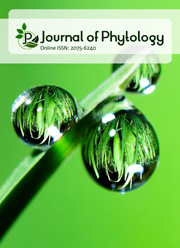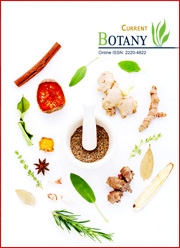Regeneration potential of different explants during micropropagation of neem tree (Azadirachta indica A. Juss.)
DOI:
https://doi.org/10.25081/jp.2021.v13.7352Keywords:
Azadirachta indica, immature zygotic embryo, nodal explants, de embryonated cotyledonsAbstract
Azadirachta indica A. Juss., (Neem), a prodigious multipurpose tree, has immense potential to benefit mankind and to protect the environment. In order to investigate the effects of three different explants for its regeneration potential, de embryonated cotyledon, immature zygotic embryo and nodal segments from a 30 year old neem plus tree were used. Half strength MS medium with benzyl amino purine (3 mg/L) and naphthalene acetic acid (0.5 mg/L) and casein hydrolysate (1 g/L) was effective in shoot bud sprouting from both nodes and cotyledons. Half strength MS medium fortified with TDZ (0.2 mg/L) was effective for induction of somatic embryogenesis from zygotic embryos. Shoot buds initiated from the cotyledons produced a maximum number of shoots per explants (4.33) which on further sub culturing induced maximum multiple shoots (15) on half strength MS medium fortified with BAP (1.5 mg/L), NAA (0.5 mg/L) and CH (400 g /L) and the nodal explants induced only 4-5 axillary shoots on further sub culturing. Even though immature zygotic embryos produced more number of somatic embryos per explant (24.97) within a short time (30-45 days), the plantlet conversion was poor (25.52 %). In vitro rooting was observed in half strength MS medium supplemented with IBA (2 mg/L). The regeneration potential of de embryonated cotyledons through a simple regeneration system may be beneficial for efficient mass propagation of selected plus trees of neem.
Downloads
Published
How to Cite
Issue
Section
Copyright (c) 2021 Bhavadharani Dhandapani, Gnanam Ramasamy, Senthil Natesan, Kumaran Kalayanasundaram

This work is licensed under a Creative Commons Attribution 4.0 International License.





 .
.